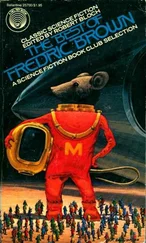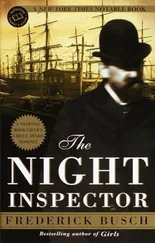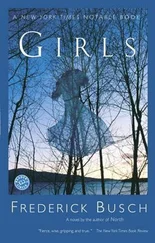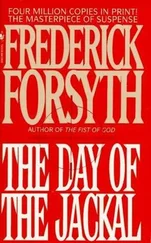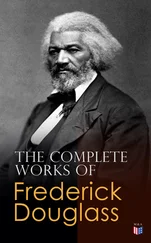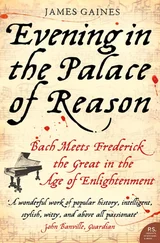HIS FATHER ROSE early and climbed the attic stairs to bathe in the farthest tub of their house. He came home from work for dinner at seven o’clock. In between for Jay Reese it was school, and his mother in the late afternoon; at every hour, though, he was the kind of boy who liked living alone. But especially after the war — during which he had lived by himself with his mother — while he was being six and seven and eight, his father was the figure disappearing in the early part of the morning, and then coming home from the practice of the law while the day went dark.
He remembered his father in two weekend costumes from those days in the Midwood section of Flatbush, in Brooklyn in New York, when the old trees made the air green in summer and were a network of traps, during the autumn and early winter, for the pink Spaulding rubber ball the boys would bat, with a sawed-off broomstick, as far down the narrow street as they could. In hot weather, his father would, on Saturdays, wear one of two seersucker suits. There was a brown-and-white stripe, there was a gray-and-white stripe, and each jacket buttoned tight at the waist, and the trousers of each would cling to his father’s thin calves. He always thought it was his father’s garters and long hose that made the trousers cling. With the brown suit his father would wear a Panama hat; with the gray, a fedora made of gray straw. And, often, there his father would be, emerging from the hot brown cars of the BMT subway at the elevated Avenue H station, obviously not thinking of his older son because he was always surprised to see that he had pedaled over the Avenue H footbridge down the leafy streets past the wide brick or stucco houses where, on Saturdays, so many fathers mowed lawns or clipped hedges or threw baseballs to kids. His father worked on Saturdays until Jay was nearly out of college, and his father, on so many of those Saturdays, in the early afternoon, tall and strong and bald and handsome in a way that used to be called manly, came out of the BMT and was surprised to see his son. They went home in, for the father, a march, and a slow ticking of bicycle gears for the son, who made his legs act patient as he wobbled his front wheel so that he might go slowly and not fall down. They were nearly side-by-side.
The other costume he recalled — the son was the sort of grownup who would dwell on melancholy matters and tatters torn back from the past — was his heavy winter coat. It was a camouflage coat, and his father had worn it in the Second World War. Jay spent a good deal of time in looking the coat over carefully for blood. It was an unbloodied coat, however, and on Sunday mornings in winter, after his father had looked at The Times , and while his mother tried to sneak into her own life in another room for a few private moments, his father, if there was snow on the ground, would tell Jay and his little brother, Jonas, to get dressed for the cold. Jay would dress himself, and his father would slide Jonas into a snowsuit that left him immobile, a two-year-old doll bundled under wool and nylon and rubber except for his nose and sad eyes and solemn mouth. Jay would wear a dull plaid mackinaw over sweater and flannel shirt, and the corduroy knickers that slid into the tops of his boots. His father, also in a mackinaw and woolen pants and boots, would add the camouflage shell, khaki on one side and snow-white on the other. His father always wore the snow-side out, and only when Jay was grown would he wonder what purpose such camouflage, in Brooklyn, New York, in the 1940s and ’50s, might serve.
His father pulled Jonas on their small wooden sled, while Jay, like a warrior, carried the longer sled at port-arms across Avenue I, and toward the footbridge at Avenue H, over which pedestrians might walk while, underneath, the freight trains of the Long Island Railroad rumbled, heading for the Atlantic Avenue terminal and then out of Brooklyn to the rest of the world. It was a great concrete slab, that arching bridge, with meshwire sides and both a railed ramp and a set of concrete steps. You could stand on it and look down as the train came by, throwing heat and sound. Next to the steps was a patch of waste ground, beside a small pale apartment house. And in the area between the apartments and the bridge, fathers stood and talked easily, without intimacy, or they read their Sunday papers, swaying as though they hung onto handstraps aboard the BMT, and no trains ran below, and children — Jay, alone, and then sometimes with Jonas tucked before him, seated, or clinging prone to his back — rode shrieking down the long gradual hill to stop in the deeper snow some twenty feet or so from the double set of tracks.
And one day, in the winter, after Christmastime, Jay remembered, he and Jonas and their father went to the bridge to sled and were met by a group of puzzled fathers and children. They stood, looking at the newcomers and then back to the waste ground from which the sleds were launched, to see the new fence. There was something miraculous about it, because although children had walked and biked there, and though certain fathers, Jay’s among them, had walked on the bridge twice a day all week, no one, apparently, had seen the fence erected. It was very high, and was attached, on the right, to the bridge itself, and, on the left, to a 10- or 12-foot metal pole beside the apartment house. It was a tall wire fence of the sort that keeps people out of, or trapped inside, the recess yards of public schools. Many of them stood at the fence and held the heavy, woven mesh. And then Jay’s father pointed out to the others that the overhead electric wires, running beneath the bridge and above the tracks, were different — they had new hues of glass transformer, and large metal boxes of a different shape were affixed to creosoted poles, and the wire itself was a thicker and shinier black. They agreed, the fathers, while their children stamped and whined and looked about, that these were “high power lines,” though no one knew the meaning of what they agreed on. To keep the children of the Avenue H neighborhood safe, their sledding ground was closed.
Of course, children learned to sneak under the fence soon enough, and to climb over the side of the bridge and hang by their hands and pull themselves, dangling in the air, to the side of the hill and then tumble until their balance was caught, and then be safely standing on what was forbidden. Some threw sleds over in winter and then climbed over the bridge — for a while, Jay was among them. Some climbed over in warmer weather to huddle under the bridge, as if it rained and they were camping, in order to have a hidden place for smoking their Old Gold cigarettes. And two boys, who came from across Ocean Avenue, climbed over and shinnied along the girders beneath the bridge and fell onto the lines and were burned to death by the electricity. A man who lived in the apartment house, a Silesian bookbinder named Jankowicz who bound Jay’s mother’s magazines into volumes, had reported to Jay’s parents that when the police lifted the bodies up to the bridge and took them off in a long green truck, the limbs were stiff and the flesh was dark, “like they was cooked,” his mother reported that Jankowicz had said. She reported it a lot. And Jay thought of roasted bellies and crusts of dark buttock and he stopped climbing over the bridge. But that was later, after the day when the fathers and sons stood interdicted by a fence in a neighborhood that was largely without such barriers. It was a witty but to him forgivable formulation, as Jay thought of it later on, waxing sentimental over his father’s wardrobe and his early life in the quiet, gentle district where they’d lived: the world had, one weekend, announced to the children of children of immigrants, many of whom thought of themselves as living in the almost-prosperous not-quite-suburbs, that they could descend as swiftly as they wished, in silence or in frightened laughter; the danger, said the diamond-shapes of thick linked fence, the bright black wire, the energy that snaked within it, was in trying to rise.
Читать дальше


